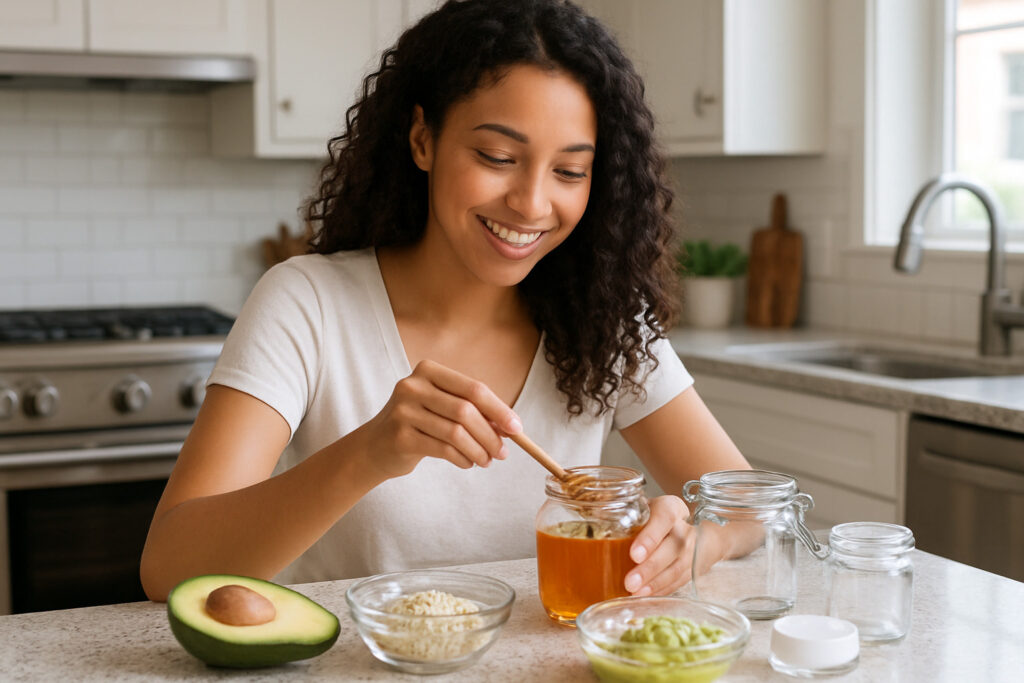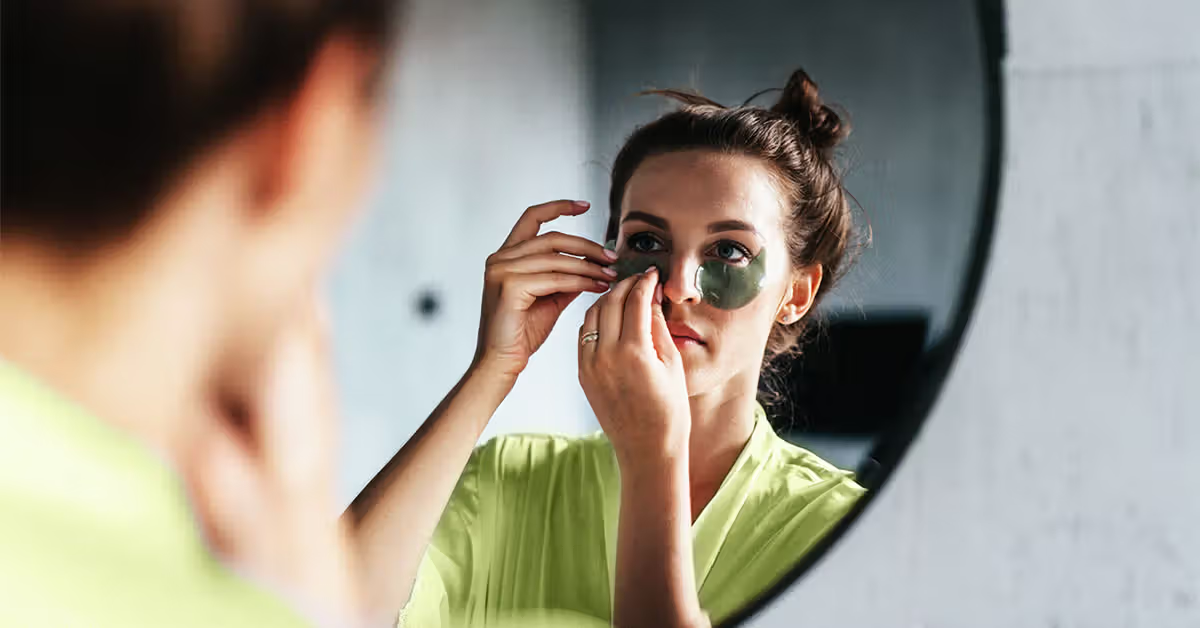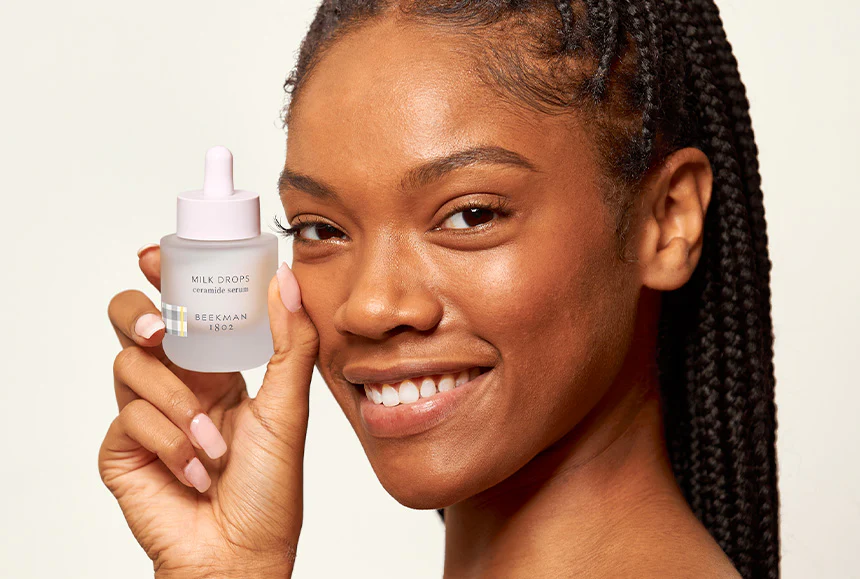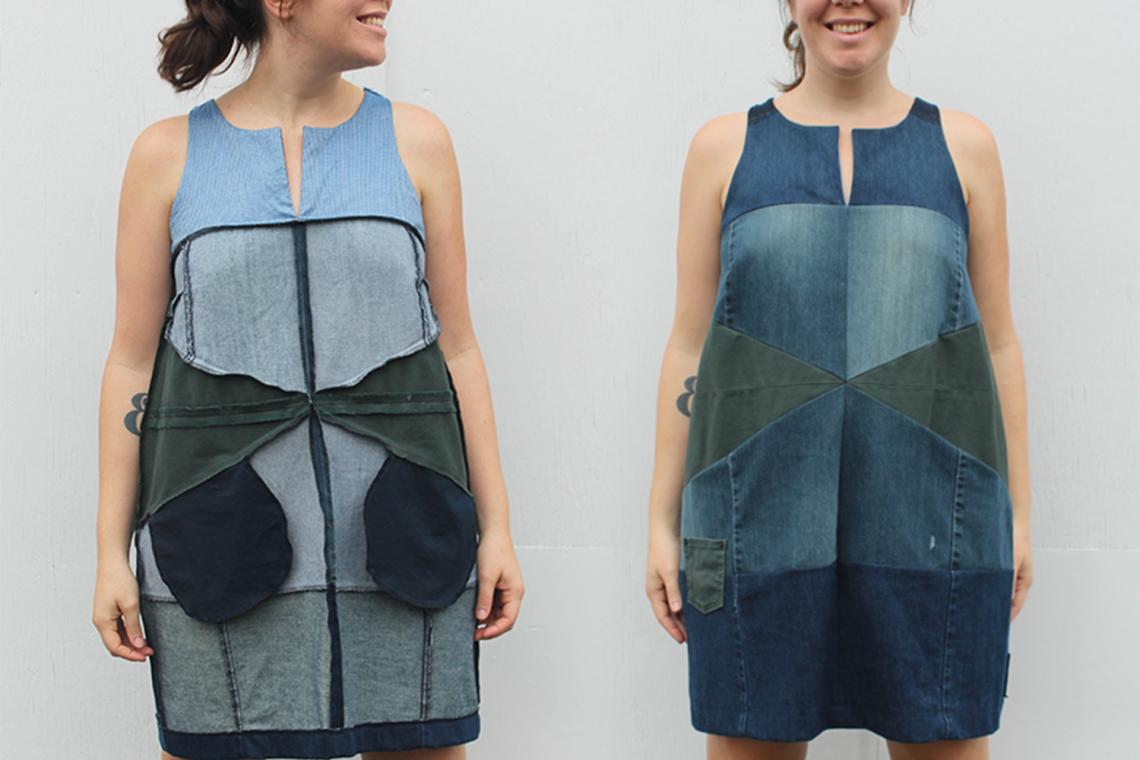Why DIY Natural Skincare Is Taking Beauty By Storm
Remember when making your own face mask was just something you did at sleepovers? Those days are long gone! DIY natural skincare has evolved from occasional fun to a full-blown beauty revolution that’s changing how we care for our skin.
The concept is beautifully simple: transform everyday ingredients from your kitchen into effective skincare that works wonders. When you create DIY natural skincare products, you’re the formulator, giving you complete control over what touches your skin. No more squinting at complicated ingredient lists or wondering about hidden chemicals!
Your pantry is actually a treasure trove of skincare magic. Honey delivers antibacterial properties while hydrating, yogurt gently exfoliates with natural lactic acid, and oatmeal soothes even the most sensitive skin. Coconut oil provides rich moisture, while aloe vera offers cooling relief and healing benefits. These ingredients aren’t just natural – they’re powerhouses that rival their commercial counterparts.
Creating your own basic skincare routine is surprisingly easy. Mix a tablespoon of honey with a teaspoon of yogurt for a gentle, effective cleanser. For exfoliation, combine two tablespoons of brown sugar with a tablespoon of olive oil to reveal glowing skin. Need moisture? Blend a tablespoon of aloe vera gel with five drops of jojoba oil for a lightweight, nourishing moisturizer.
What’s driving this movement? The numbers tell a compelling story. A 2022 survey revealed that 41% of Americans have tried crafting their own skincare products. People aren’t just looking to save money (though that’s a lovely bonus!) – they’re seeking control over what goes on their largest organ: their skin.
As one beauty expert from Healthline notes, “Making your own skincare products can be both fun and rewarding, plus it allows you to have complete control over what ingredients you’re putting on your skin.”
This isn’t just a passing trend. The global natural and organic personal care market is projected to reach a staggering $25.1 billion by 2025. Consumers are increasingly questioning long-term effects of synthetic ingredients while also considering the environmental impact of their beauty choices.
When you accept DIY natural skincare, you’re making a choice that extends beyond beauty. You’re reducing packaging waste, eliminating potentially harmful chemicals, customizing products for your unique needs, and often saving money in the process. Most homemade products have a shelf life of 1-2 weeks when refrigerated – a small trade-off for fresher, purer skincare.
Ready to transform your bathroom into a natural beauty lab? Let’s dive deeper into how simple kitchen ingredients can become powerful allies in your quest for healthy, radiant skin.

Pantry Power: Safe & Effective Ingredients
The beauty of DIY natural skincare lies right in your kitchen! Those humble jars and containers in your pantry aren’t just for cooking—they’re packed with powerful nutrients that fancy skincare brands often try to recreate in labs.

Kitchen Staples That Transform Your Skin
Honey jar sitting in your pantry? It’s actually a skincare superstar! Raw, unfiltered honey works as nature’s humectant—drawing moisture into your skin while fighting bacteria. According to a 2021 survey, 68% of DIY skincare enthusiasts choose ingredients like honey specifically to avoid synthetic chemicals.
“Honey gives you that healthy glow we’re all after,” says Louisa Macan-Graves, who’s been whipping up natural skincare for years. “It’s like nature’s moisturizer.”
Got oats for breakfast? Save some for your face! When finely ground into colloidal oatmeal, they contain saponins that cleanse while their avenanthramides (fancy word for oat compounds) calm irritated skin. Your sensitive skin will thank you!
That yogurt for your morning parfait? Its lactic acid gently exfoliates while probiotics balance your skin’s microbiome. Grab the Greek variety if you can—its higher protein content makes masks that both nourish and refine skin texture.
The turmeric you use in cooking fights inflammation on your skin too. “It’s like having a golden shield against pollution and UV damage,” notes a veteran skincare formulator. Just mix it with honey or yogurt to prevent temporary yellow staining (unless you’re going for that sunshine glow look!).
And that aloe vera plant on your windowsill isn’t just pretty—slice open a leaf for gel that instantly soothes sunburns and irritation. It’s like a cool drink of water for thirsty skin!
Carrier Oils, Clays & More
Your cooking oils double as carrier oils for skincare:
Jojoba oil feels most like your skin’s natural oils, making it friendly for all skin types. Sweet almond oil absorbs quickly and delivers vitamin E goodness. Coconut oil offers deep moisture (though it might cause breakouts for some). That bottle of olive oil you use for salads? Rich in antioxidants but a bit heavy, so best for dry skin. And argan oil works beautifully as a standalone moisturizer—light and never greasy.
Clays are earth’s gift to your skincare routine. Bentonite works like a magnet for impurities—perfect for oily or acne-prone skin. French green clay gently exfoliates while detoxifying. Kaolin treats sensitive skin with kid gloves. And rose clay offers gentle exfoliation with a pretty pink hue.
Don’t forget hydrosols—these floral waters are like essential oils’ gentler cousins. Rose water soothes while tightening pores, chamomile hydrosol calms inflammation, and lavender hydrosol brings balance to most skin types.
Ingredient All-Stars for Every Skin Goal
Looking for antioxidant protection? Brew some green tea for your skin—its polyphenols fight free radicals like tiny warriors. Cocoa powder isn’t just for hot chocolate; its flavonoids shield skin from environmental damage. And pomegranate seed oil packs aging-fighting compounds that keep skin youthful.
Need hydration? Raw honey pulls moisture into your skin like a magnet. Plant-derived glycerin binds water to your skin, while aloe vera gel delivers lightweight hydration perfect for summer.
For gentle exfoliation, look no further than yogurt with its natural lactic acid. Papaya contains enzymes that dissolve dead skin cells without scrubbing. And diluted apple cider vinegar brightens and balances your skin’s pH with its natural malic acid.
Budget & Quality Sourcing Tips
Creating DIY natural skincare can be affordable when you know where to look! Choose organic options when possible, especially for ingredients you’ll use often like oats and honey. Your skin absorbs what you put on it, so quality matters.
Bulk buying saves money in the long run. Those shelf-stable ingredients like clays and dried herbs cost less when purchased in larger quantities. Many health food stores have bulk sections where you can fill your own containers—perfect for trying new ingredients without committing to large amounts.
Don’t overlook farmer’s markets for fresh herbs, honey, and botanical ingredients. You’ll often find better prices than specialty stores, plus you can chat directly with producers about their growing methods. Nothing beats getting your calendula from the person who grew it!
“I still remember the first skincare recipe I ever made. It was that transformative!” shares Militza Maury, author of “Natural Homemade Skin Care.” She suggests starting with simple recipes using grocery-store finds before investing in specialty items.
Want to dive deeper into ingredient options? Check out our comprehensive DIY Skincare Ingredients guide or explore the science behind ingredients like honey in this research overview. For a complete understanding of what goes into clean beauty products, our Ingredient Glossary: Clean Beauty Terms You Should Know is an essential resource.
DIY Natural Skincare Routine & Core Recipes
Creating a DIY natural skincare routine doesn’t require a bathroom cabinet full of products. In fact, when it comes to natural skincare, simplicity often yields the best results for both your skin and the planet.
Routine Basics: Less Is More
Think of your skincare routine as a delicious four-course meal rather than an overwhelming buffet. You really only need these essential steps:
- Cleanse: Wash away the day’s dirt and environmental pollutants
- Exfoliate: Gently remove dead skin cells (just 2-3 times weekly)
- Moisturize: Nourish and hydrate your beautiful skin
- Protect: Shield your skin from sun damage and environmental stressors
I love how making my own skincare has transformed not just my skin, but also my wallet and environmental footprint. Just look at how homemade options stack up against store-bought products:
| DIY Natural Skincare | Commercial Products |
|---|---|
| Customizable for your skin | One-size-fits-all formulations |
| Fresh, active ingredients | Preservatives may reduce efficacy |
| $0.50-$2 per application | $5-$50+ per product |
| Minimal packaging waste | Significant packaging waste |
| 1-2 week shelf life | 6-24 month shelf life |
| 5-15 minutes preparation | Immediate use |
DIY Natural Skincare Cleanser
Washing your face shouldn’t leave it feeling tight or stripped. The best cleansers remove impurities while respecting your skin’s natural moisture.
Oil Cleansing Method
Remember high school chemistry? “Like dissolves like” means oils are surprisingly effective at dissolving makeup, sunscreen, and excess oil on your skin.
For a basic oil cleanser, mix 2 parts of a light carrier oil (jojoba works beautifully for most skin types) with 1 part castor oil. Simply massage into dry skin for 1-2 minutes, then remove with a warm, damp cloth. Your skin will feel clean but not tight—a revelation if you’re used to foaming cleansers!
Gentle Oatmeal Cleanser
For those mornings when your skin feels sensitive or dry, this soothing oatmeal cleanser works wonders. Combine 2 tablespoons of finely ground oats with 1 tablespoon of honey and a teaspoon of yogurt if you have it on hand. The gentle massage as you work it onto damp skin provides just enough exfoliation without irritation.
pH-Balanced Honey Cleanser
Did you know honey’s natural pH (around 4.5) closely matches your skin’s ideal pH (4.7-5.5)? That’s one reason it makes such a wonderful cleanser. Simply mix a tablespoon of raw honey with a teaspoon of filtered water or a floral hydrosol and apply to damp skin using gentle circular motions.
As one skincare formulator notes, “Applying honey in circular motions increases blood flow and circulation, enhancing its glow effect.” Rinse with lukewarm water and enjoy that natural radiance!
DIY Natural Skincare Exfoliator
Exfoliation is the secret to brighter, smoother skin—but gentleness is key, especially for your face. Your DIY options include both physical and chemical exfoliants.
Sugar Scrub (Body Only)
Sugar’s naturally round particles make it perfect for body exfoliation. Mix 1/2 cup brown sugar with 1/4 cup of your favorite carrier oil (coconut oil feels divine) and a few drops of essential oil if desired. Store in an airtight container and use 1-2 times weekly—but please, keep this one away from your face where skin is much more delicate.
Coffee Scrub (Body Only)
Don’t toss those used coffee grounds! Dry them out and mix 1/4 cup with 1/4 cup brown sugar and 3 tablespoons melted coconut oil for an invigorating body scrub. The caffeine may temporarily tighten skin, making this especially nice for areas prone to cellulite.
Enzyme Fruit Mask (Face)
For facial exfoliation, fruit enzymes provide gentle chemical exfoliation without harsh scrubbing. Mash 2 tablespoons of ripe papaya or pineapple and mix with a teaspoon each of honey and yogurt. Apply to clean skin for 10-15 minutes before rinsing. The enzymes work to dissolve dead skin cells while the honey and yogurt soothe and hydrate.
Moisturize & Protect
The final essential step in your DIY natural skincare routine is moisturizing, which seals in hydration and provides nutrients for healthy skin.

Whipped Body Butter
This luscious moisturizer feels like a cloud on your skin. Melt 1/2 cup shea butter with 1/4 cup coconut oil in a double boiler, then remove from heat and add 1/4 cup of a nourishing carrier oil like sweet almond or jojoba. Add 10-15 drops of your favorite essential oil if desired, then refrigerate until almost solid (about 30 minutes). The magic happens when you whip it with a hand mixer until it’s light and fluffy.
As one DIY enthusiast shared, “I love making these and enjoy mixing the ingredients and filling the pots. One of my all-time favorite natural skin care recipes is the homemade night cream.”
Simple Face Oil
Facial oils can be custom to your skin’s unique needs. For normal to combination skin, try combining 1 ounce of jojoba oil with 5 drops each of lavender and frankincense essential oils in a dark glass bottle. Apply just 3-5 drops to slightly damp skin for the perfect amount of moisture without greasiness.
Natural Sun Protection Support
While homemade sunscreens shouldn’t replace commercial SPF products (formulating effective sun protection requires specialized equipment), you can create a supportive formula. Mix 1/4 cup aloe vera gel with 2 tablespoons raspberry seed oil, 1 tablespoon non-nano zinc oxide, and 10 drops carrot seed essential oil. Use this alongside your regular sunscreen for added nourishment.
Morning vs. Night Steps
Your skin faces different challenges throughout the day, so morning and evening routines should address these specific needs:
AM Routine:
Start with a gentle cleanse—sometimes just water is enough if you thoroughly cleansed the night before. Follow with a hydrating toner if you like that extra step, then a light moisturizer. Always finish with sun protection before heading out.
PM Routine:
Evening is the time for more thorough cleansing to remove makeup and environmental pollutants. Use oil cleansing for effective makeup removal, then exfoliate 2-3 times weekly and apply treatment masks 1-2 times weekly. Finish with a richer moisturizer or facial oil to repair while you sleep.
“Your at-home skin care routine should be something you look forward to every day,” advises a skincare expert. “Spend a little time and effort now, and you’ll reap the rewards for a lifetime.”
Consistency trumps complexity every time. A simple routine you actually follow will always yield better results than an elaborate regimen that feels overwhelming. Start with these basics, and you’ll be amazed at how your skin responds to natural, homemade care.
Personalizing DIY Natural Skincare for Skin Types & Concerns
The magic of DIY natural skincare lies in its flexibility. Unlike store-bought products designed for the masses, your homemade creations can be perfectly custom to address your unique skin needs. Whether you’re battling occasional breakouts or chronic dryness, nature provides specific ingredients to help.
Understanding Your Skin Type
We all have different skin, and understanding yours is the first step to creating effective products.
If you have oily skin that looks shiny by midday with visible pores and occasional breakouts, your skin is producing excess sebum. Clay masks will become your best friend, along with witch hazel, tea tree oil, and lightweight jojoba oil. You’ll want to steer clear of heavy oils like coconut and olive oil, which might leave you looking like you’ve been dipped in butter!
For those with dry skin that feels tight after washing and might flake or look dull, your skin craves rich moisture. Accept shea butter, avocado oil, honey, and glycerin to restore that healthy glow. Avoid ingredients with alcohol and limit clay masks, which could leave your already parched skin feeling like the Sahara.
Sensitive skin folks know the struggle – that stinging, burning, or redness that appears when your skin decides it doesn’t like something. Gentle ingredients like oat flour, chamomile, calendula, and aloe vera will soothe your reactive skin. Be extremely cautious with essential oils (dilute heavily or skip entirely) and avoid irritants like citrus or cinnamon.
If you have combination skin with an oily T-zone but dry cheeks, you’re walking the middle path. Balanced ingredients like jojoba oil, honey, yogurt, and mild clays will help normalize your skin without exacerbating either extreme.
Targeted Acne Solutions
Acne happens when pores get clogged with excess oil and dead skin cells, creating a paradise for bacteria. But nature offers powerful solutions that work without harsh chemicals.
Tea tree oil is nature’s antibacterial champion. Create a simple spot treatment by mixing 1 tablespoon of aloe vera gel with 2-3 drops of tea tree essential oil and an optional drop of lavender oil for extra soothing power. Apply it directly to blemishes with a cotton swab morning and night, and watch them shrink away.
Clay masks work wonders for oily, acne-prone skin by drawing out impurities like a magnet. Mix 1 tablespoon of bentonite clay with 1 tablespoon of apple cider vinegar, a teaspoon of honey, and an optional drop of tea tree oil. Apply to clean skin, let it work until almost dry (about 10-15 minutes), then rinse with warm water. Your skin will feel refreshed and purified.
Speaking of apple cider vinegar, it makes an excellent toner that helps balance your skin’s pH. “Diluted apple cider vinegar balances skin pH in a way analogous to how it balances vaginal pH,” explains a natural skincare formulator. Mix 1 part raw, unfiltered ACV with 4 parts filtered water and a few drops of lavender or chamomile essential oil if desired. If you have sensitive skin, start with a more diluted version (1:6 ratio) and apply with a cotton pad after cleansing.
Quenching Dryness
Dry skin needs ingredients that both attract moisture and lock it in. The commercial beauty industry pushes hyaluronic acid serums, but nature offers wonderful alternatives.

Create your own hydrating serum by combining 2 tablespoons of aloe vera gel, 1 teaspoon of vegetable glycerin, 1 teaspoon of honey, and 5 drops of rosehip seed oil. This powerful moisture-booster can be applied to damp skin before your regular moisturizer. Keep it in the refrigerator for a refreshing treat that lasts about a week.
For intense overnight hydration, whip up a rich shea butter night cream. Melt 2 tablespoons of shea butter with 1 tablespoon of coconut oil in a double boiler, then remove from heat and stir in 1 tablespoon of rosehip or argan oil and 5 drops of lavender essential oil if desired. Pour into a clean jar, let it cool completely, and apply a small amount to your clean face before bed. You’ll wake up with noticeably softer skin.
Vegetable glycerin is another moisture powerhouse that draws water into your skin. Create a simple glycerin spray by mixing 1 tablespoon of vegetable glycerin with 3 tablespoons of rose water or distilled water and 5 drops of vitamin E oil as a preservative. Mist onto damp skin before applying moisturizer for an extra hydration boost.
Soothing Sensitive Skin
Sensitive skin needs gentle care with calming ingredients that strengthen your skin’s natural barrier.
Colloidal oats contain compounds that instantly calm inflammation and irritation. Create a soothing mask by mixing 2 tablespoons of finely ground oats with 1 tablespoon of honey and enough milk or water to form a paste. Apply to clean skin, relax for 15-20 minutes, then rinse with lukewarm water. It’s gentle enough to use whenever your skin feels irritated.
Chamomile isn’t just for tea – it has potent anti-inflammatory properties for your skin too. Make a simple chamomile compress by steeping 2 chamomile tea bags or 2 tablespoons of dried chamomile flowers in a cup of boiling water for 10 minutes. Strain and cool the liquid, then soak a clean cloth in it, wring out the excess, and apply to irritated areas for 10-15 minutes. The relief is almost immediate.
For deeper repair of a compromised skin barrier, blend 1 tablespoon of evening primrose oil with 1 tablespoon of jojoba oil and 5 drops of chamomile or blue tansy essential oil (optional but wonderful for sensitive skin). Apply 2-3 drops to damp skin, preferably at night when your skin does its best repair work.
The beauty of DIY natural skincare is that you can experiment and adjust as your skin’s needs change with seasons, stress levels, or age. By understanding the properties of different natural ingredients, you can become your own skincare formulator, creating products that work in harmony with your unique skin.
For a deeper understanding of the ingredients we’ve discussed, check out our comprehensive Ingredient Glossary: Clean Beauty Terms You Should Know to become even more confident in your DIY natural skincare journey.
Safety Essentials: Patch Testing, Storage, Ingredient Red Flags
While DIY natural skincare uses gentler ingredients than many commercial products, safety should still be your priority. Natural doesn’t automatically mean safe for everyone – your kitchen might be full of powerful ingredients that deserve respect!

Patch-Test Protocol
Always patch test new ingredients or formulations before applying them to your face or large body areas. I learned this lesson the hard way after an unfortunate turmeric mask left me looking like a surprised goldfish!
24-Hour Rule
The gold standard for patch testing requires a little patience, but your skin will thank you:
Apply a small amount of your product to the inside of your forearm or behind your ear. Cover with a bandage and leave for 24 hours (yes, a full day!). If no redness, itching, or irritation occurs, you’re likely good to go.
“Make a paste of the ingredient with water, apply it to your forearm about the size of a quarter, cover with a loose band-aid, and if there’s no reaction within 24 hours, it’s safe to use,” advises a natural skincare expert.
Inner Arm Test
The thin skin of your inner arm is more sensitive and reactive than other areas, making it the perfect canary in the coal mine. If your skin doesn’t react here, it’s less likely to throw a fit elsewhere on your body.
Smart Storage & Preservation
Without commercial preservatives, DIY natural skincare products won’t last forever on your bathroom shelf. Proper storage is crucial to keep your creations fresh and effective.
Amber Glass
Dark-colored glass protects light-sensitive ingredients from degradation. Those pretty mason jars are cute for your kitchen, but amber glass is the gold standard for skincare storage. Try to avoid plastic containers when possible, as essential oils can break down plastic over time, leaving you with a leaky, melty mess.
Refrigeration
Water-based products like toners, hydrosols, and aloe gels should take up residence in your refrigerator and be used within 1-2 weeks. The cool bonus? A chilled face mist feels amazing on hot summer days! Oil-based products can typically hang out at room temperature for 1-3 months.
Natural Preservatives
While not as powerful as commercial preservatives, these natural options can help extend your products’ shelf life:
Vitamin E oil is a skincare superstar – add 5-10 drops per 1 oz of product. Rosemary extract works as a natural antioxidant that helps prevent oils from going rancid. High-proof alcohol can work for toners and astringents, though it can be drying for some skin types.
“Most mixtures can be refrigerated for several days up to one week,” notes a DIY skincare formulator. “Think of your homemade skincare like fresh food – would you eat week-old soup that’s been sitting on your counter?”
Natural Yet Harmful: What to Skip
Not all natural ingredients deserve a place in your DIY natural skincare routine. These common ingredients should be approached with caution or avoided altogether:
Lemon Juice on Face
While Pinterest might suggest it for brightening, lemon juice is highly acidic (pH 2-3) and can seriously disrupt your skin’s natural pH. Beyond immediate irritation, it can create photosensitivity, making your skin more vulnerable to sun damage. Save the lemons for your water or cooking!
Undiluted Baking Soda
With a pH of 9, baking soda is far too alkaline for skin (which prefers a natural pH of 4.7-5.5). It disrupts your skin’s protective acid mantle and can cause irritation, dryness, and sensitivity over time. “Why Baking Soda Face Masks are a No-No for Skin Care” is a common warning from dermatologists for good reason.
Sugar Scrubs on Face
While perfectly fine for smoothing rough elbows and knees, sugar crystals are too jagged and abrasive for delicate facial skin. Those tiny crystals can cause micro-tears that compromise your skin barrier. Opt for gentler exfoliants like rice powder or enzymatic fruit masks for your precious face.
Raw Eggs
Although protein-rich, raw eggs pose salmonella risks (no one wants a side of bacteria with their beauty routine) and can trigger allergic reactions in sensitive individuals. There are safer protein sources for your skin.
Cinnamon and Citrus Essential Oils
These are highly sensitizing and can cause irritation, especially on facial skin. If used at all, they should be extremely diluted (less than 0.5%). That warming sensation? It’s actually irritation, not increased circulation.
A 2023 Healthline article warns: “Lemon Juice to ACV: 7 DIY Ingredients That Harm Your Skin Over Time” highlights the importance of researching ingredients before slathering them on your face. At Beyond Beauty Lab, we believe informed beauty is the best beauty!
Conclusion
Embracing DIY natural skincare is more than a beauty routine—it’s a journey toward self-care, sustainability, and a deeper connection with what goes on your body. Throughout this guide, we’ve seen how making your own products puts the power of nature in your hands while helping you avoid potentially harmful synthetic ingredients.
The real beauty of this approach lies in its simplicity. You don’t need to transform your entire routine overnight or invest in countless exotic ingredients. Start small with just one recipe that addresses your biggest skin concern. Maybe begin with that simple honey cleanser or a basic facial oil blend, then gradually expand as your confidence grows.
Consistency matters more than complexity. Even the most nourishing natural ingredients need time to work their magic. Give your skin at least 4-6 weeks to adjust to new formulations before expecting dramatic results—your patience will be rewarded.
When you create DIY natural skincare products, you’re also nurturing eco-friendly habits that extend far beyond your bathroom shelf. By choosing minimal, biodegradable ingredients and reusable containers, you reduce your environmental footprint with every batch you make. It’s no wonder that a 2021 study found 68% of people who make their own skincare do so primarily to avoid synthetic chemicals and preservatives—a choice that benefits both personal health and our planet.
At Beyond Beauty Lab, we believe true beauty comes from thoughtful choices that honor both our bodies and our environment. We encourage you to experiment, personalize recipes, and most importantly, enjoy the creative process. Making your own products should feel like a treat, not a chore!
“True beauty is about more than just looking good—it’s about feeling good and doing good too,” as we like to say. By crafting products with intention and care, you’re participating in a tradition that connects generations of wisdom with modern understanding.
I’d love to hear about your DIY natural skincare journey! What recipes worked wonders for your skin? Did you have any kitchen-sink mishaps along the way? The path to radiant skin is as unique as you are—accept the learning process and let your natural beauty shine through.
For more inspiration on creating sustainable beauty routines, visit our Eco-Friendly Beauty Routines resource page, where we share even more ways to make your beauty routine planet-friendly.







